Diving Malapascua – Beyond the Thresher Sharks
Unless you stay out of social media, you have probably heard about Malapascua. The main draw is the thresher sharks that congregate at the Monad Shoal every morning to be cleaned. Yes, they are really cool, and they are a great reason to go to Malapascua.
However, from an underwater photographer’s perspective, there are lots of other reasons to visit Malapascua. If you are prepared and know what you’re looking for, you can come away with lots of fantastic shots. Just make sure you do your research first. I’ll try to cover everything I learned during my very productive time there, as I really enjoyed the diving.
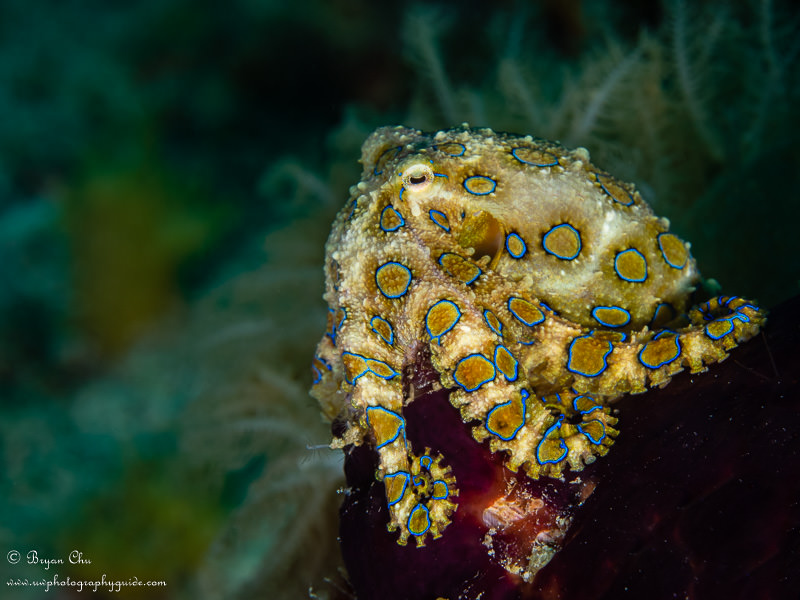
Blue-ringed octopus at Chocolate Island. Olympus OM-D E-M1, Olympus 60mm macro lens, Nauticam housing, 2x YS-D1 strobes. f/10, 1/320sec, ISO 200.
My partner Lisa and I had two places we wanted to dive on Cebu: Moalboal and Malapascua, two places listed by Bluewater Travel on their best of the Philippines list. This involved a fair amount of private car transfers, as we covered a good portion of Cebu island. However, both places were worth it!
For diving Malapascua, we wanted a great dive operation to maximize our thresher shark encounters. We also looked for a combined dive operation/resort setup, since we didn’t want to spend more time than we needed transferring to our dive shop at 5 am in the morning (which is when you have to go out for the threshers). We ended up going with the partnership of Devocean Divers and Hippocampus Beach Resort, and quite enjoyed the dive operation and the accommodations.
Getting to Malapascua
Getting to Malapascua is a bit of a trek, as you have to fly in to Cebu City, take some form of road transportation up to the northern tip of Cebu, then take a boat across the Malapascua. You can find more detailed information from Hippocampus's Getting Here page.
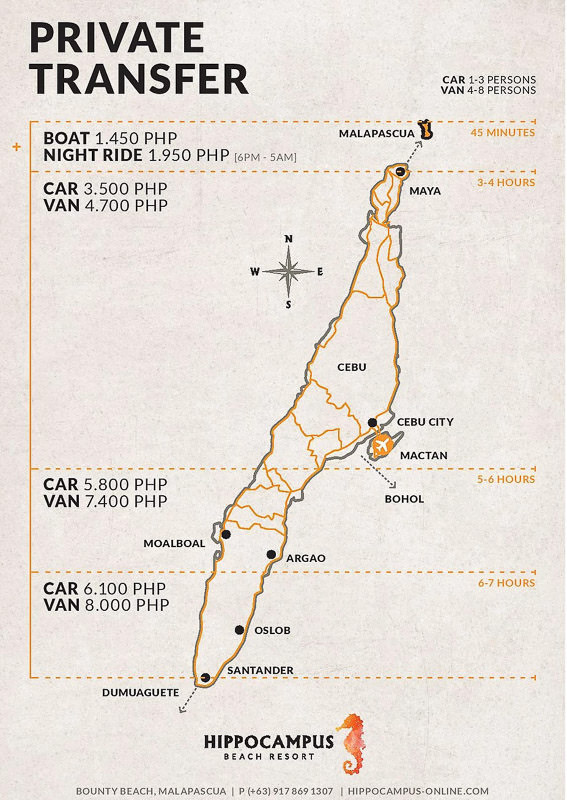
Malapascua Dive Sites
Along with the thresher sharks at Monad Shoal, the dive sites can be broken down into local dive sites (right around Malapascua), Lighthouse (local, but deserves its own mention), Chocolate Island (about 15 minutes by boat), and the longer day trips of Gato, Kalanggaman and Capitancillo Island (1 hour + by boat). The local sites, including Chocolate Island, are not great for wide angle, as they tend to consist of lots of rocks and spiny urchins; however, they are great for macro. The only really good wide angle shooting is found on the longer day trips, but there are some great reefscapes to be found there, and they should not be overlooked.
The local dive sites also have some crazy night diving opportunities, which I will go into more detail below.
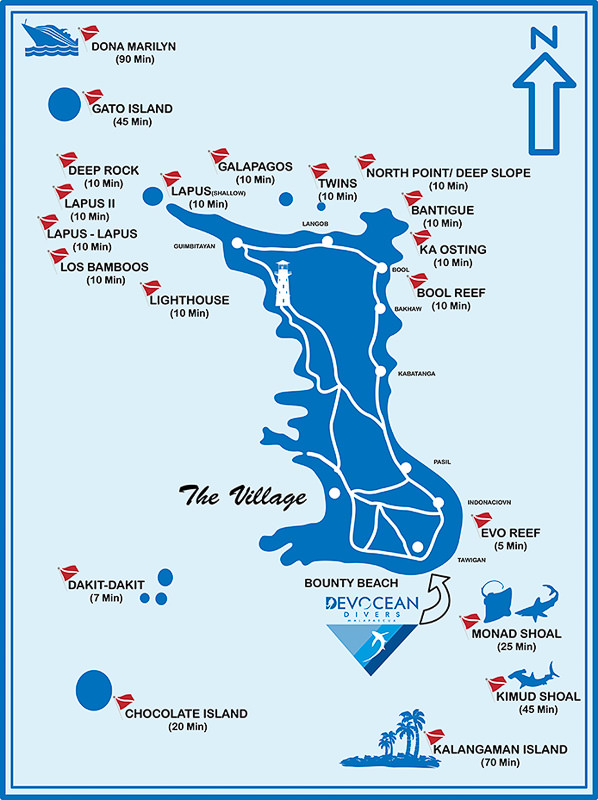
Note that Capitancillo is not shown on the map, but is to the South of Malapascua Island, further than Kalanggaman.
Local Dive Sites by Day
As mentioned above, the local dive sites by day are not particularly photogenic for wide angle shooting. However, they have some really great macro opportunities, including lots of pygmy seahorses (purple and yellow)!
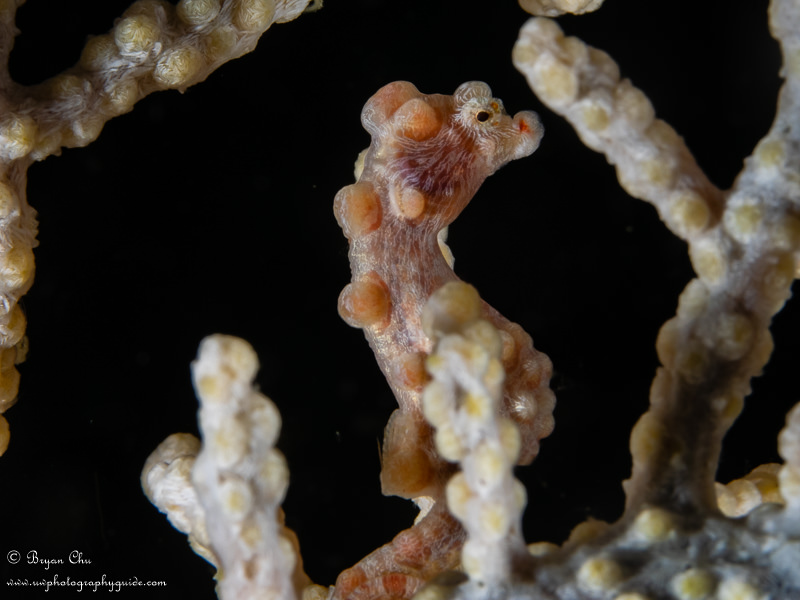
Bargibanti pygmy seahorse. Olympus OM-D E-M1, Olympus 60mm macro lens, Nauticam housing, 2x YS-D1 strobes. f/16, 1/320 sec, ISO 200.
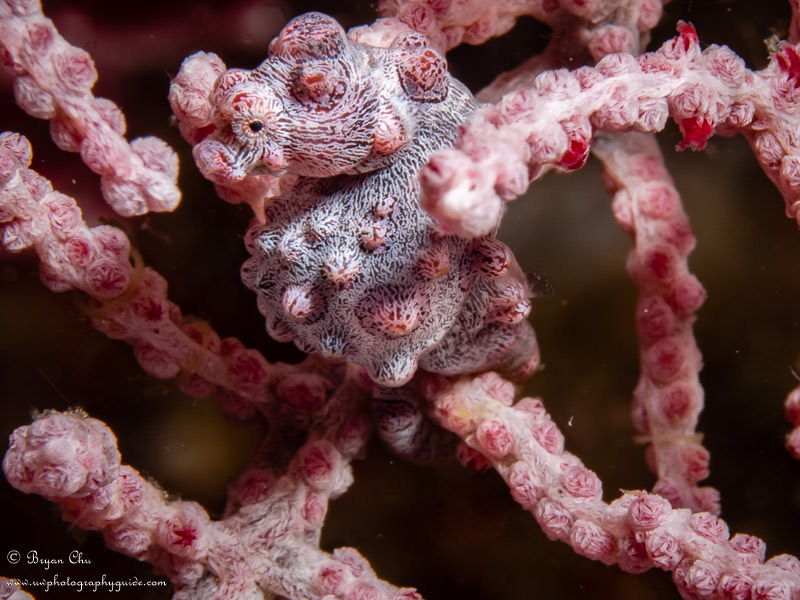
And since this isn’t a busy macro place like Anilao, there weren’t any lineups. We showed up and there were no other divers there, and we didn’t have anyone waiting for us to finish up!
There were also the usual macro subjects: cuttlefish, anemonefish, nudibranchs, schools of juvenile striped eel catfish, and so on.
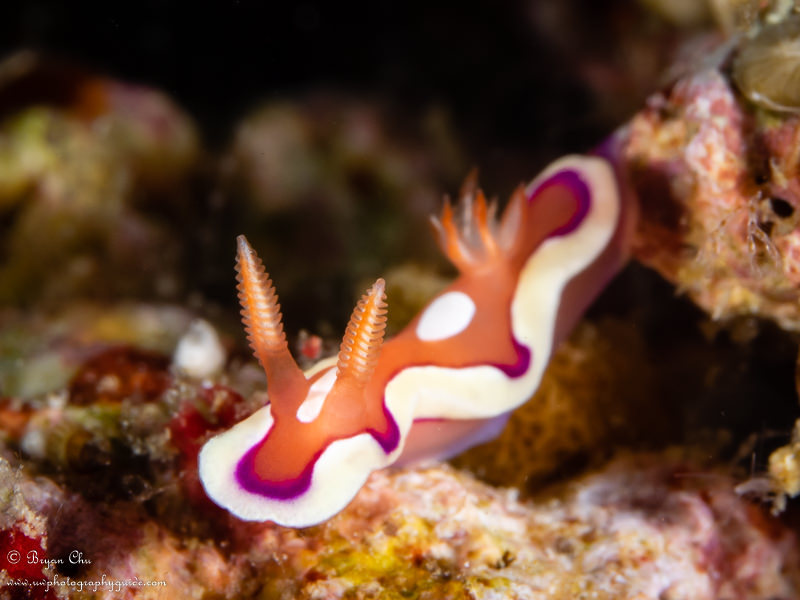
Local Dive Sites by Night
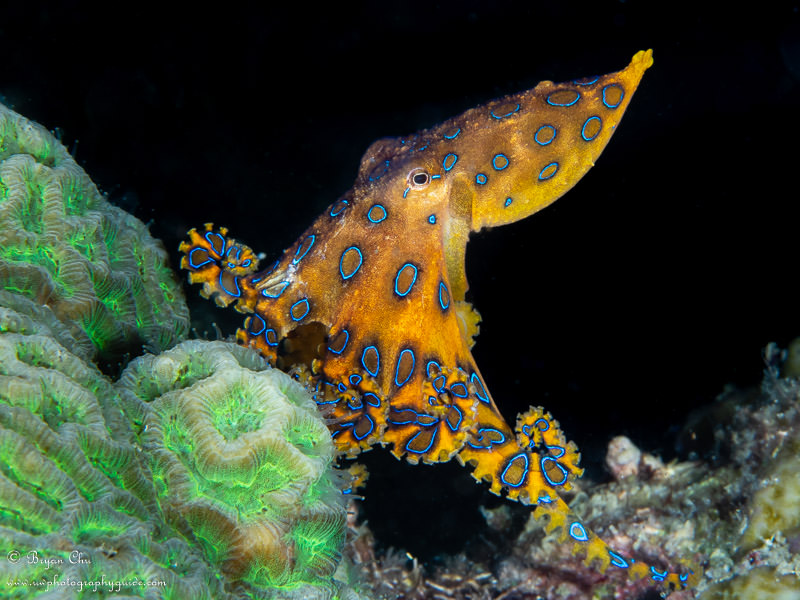
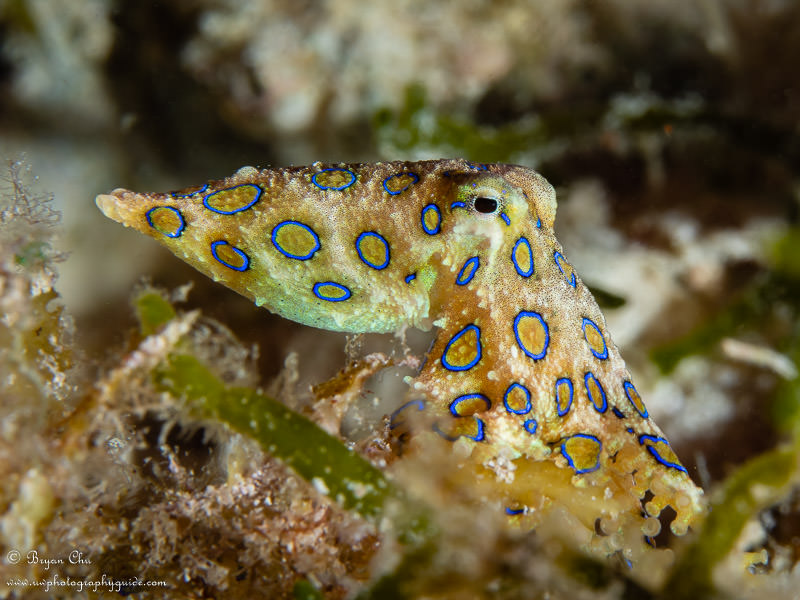
There were also lots of nudibranchs out and about, as well as some very photogenic and patient pipefish.

Lighthouse - Mandarin Fish!
I did my favourite dives in Malapascua at Lighthouse – the official mandarin fish site. I was warned by people that it was super busy, and boring because everyone just sat around for 45 minutes waiting until sunset, when the mandarin fish finally decided to mate. Even worse, the actual mating activity was over pretty much as soon as it started. It was also not a very pretty dive site – just a bunch of dead coral and rubble on the rocks. And to top it off, as the dive site got dark, you could not use white lights…only red lights, so as not to disturb the mandarin fish.
All of these things were true, but it was still so much fun that I decided to go back and do it a second time. Fortunately, the guides with Devocean knew exactly where to position us, so we were right on top of the action both times I went. They also knew about some local seahorses to show us while we waited.
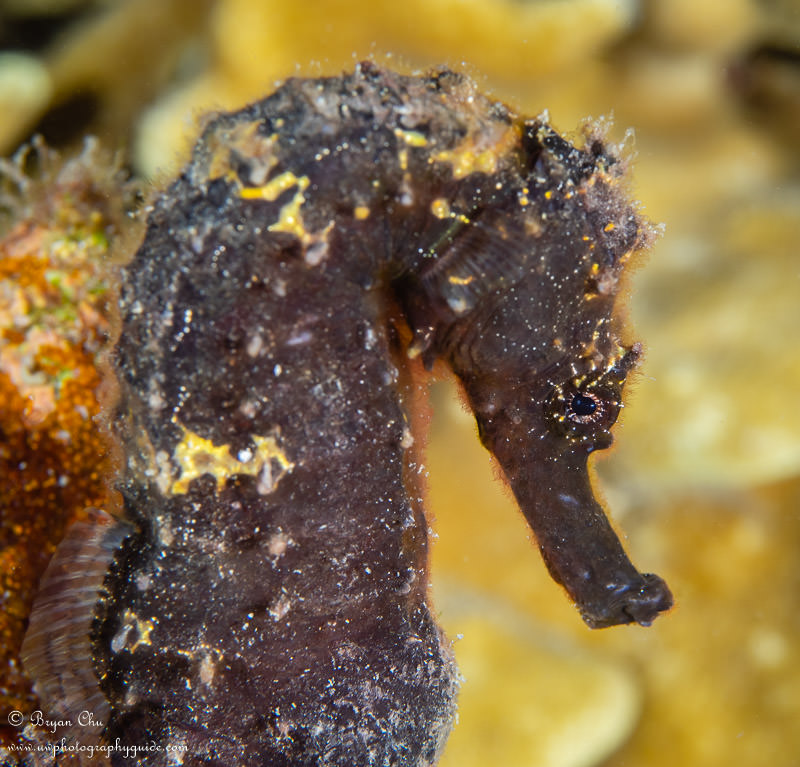
I actually had a lot of fun just sitting there and watching among the rubble for the mandarin fish. They are certainly one of the most beautiful fish out there, but what made the dive so enjoyable was watching the whole mating process playing out. You would see one creeping around the coral rubble, popping out a bit, then going back into the tunnels, then back out again. And then two of them would meet, and flit around the coral together, and then maybe separate again.
Then, they would come back together, and stay closer, and move higher up on the coral. Then, they started to swim up together…and then they would dart back down to the coral…and then back up again…and then back down. They were really cute!
Finally, when it was time, they went up, and then up further…I lined up my shot, hit the trigger, got a good photo and then…they darted the last few inches, released clouds of eggs and sperm, and darted back into the shelter of the coral. After that, the show was over, and it was time to meander around the site for the rest of our bottom time, and then go home.
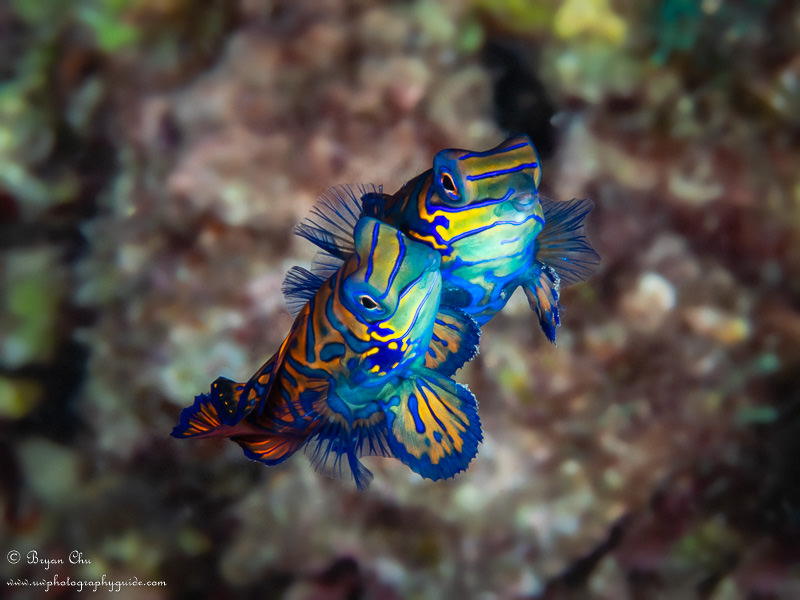
Overall, yes it was a pretty stationary dive, and there were a lot of people around. But everyone was respectful, especially of the photographers, and the guides from the different shops did a good job of managing their people and minimizing any harm to the reef. And just spending 45 minutes watching the mating process of a really beautiful fish was super cool, and certainly a highlight of my diving so far.
I would highly recommend you do this dive at least once; here’s a few quick tips:
- Make sure you go with a reputable shop with knowledgeable, responsible guides who will get you there early and get you right in on the action
- You may get cold since you are so stationary throughout the dive. Wear extra exposure protection
- You need a red focus light to take photos; no red light, and you won’t be able to get the mating shots. My Sola 1200 photo light was perfect, but I have since upgraded to a Kraken 3500S+, which is even better!
- Patience, patience, patience. But don’t be afraid to get shots of the fish while they are starting their mating dance, as you don’t need to catch them right at the end to get a nice photo. And the strobe flashes didn't seem to bother them, though I made sure to take my shots sparingly, just in case.
- Take some time off from worrying about your photos to just enjoy the show
If you want more info about shooting mandarin fish, check out Scott’s Mandarin fish master class tutorial.
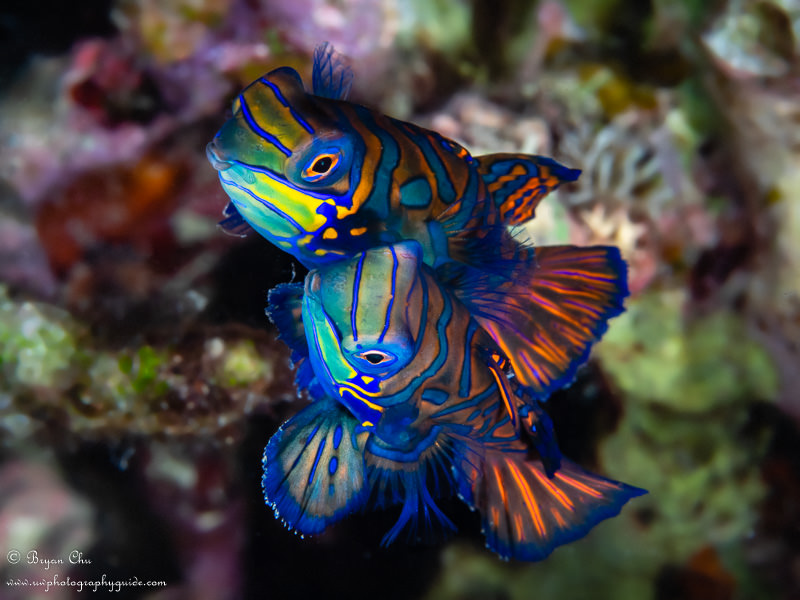
Chocolate Island
This place deserves its own entry, as it is a great dive site. Some of my best shots of the trip were taken here. It is about a 20-minute boat ride from Malapascua, so it’s not a regular spot for the local shops. However, if you get together 4 people, Devocean will take you, and it’s well worth it. Both times we went, we were the only dive group there, which made it that much better.
The main thing we were looking for was the flamboyant cuttlefish, which we found both times we went. Although we only found one, during flamboyant cuttlefish mating season there are a whole lot around. That in itself could be worth scheduling your trip to Malapascua around!
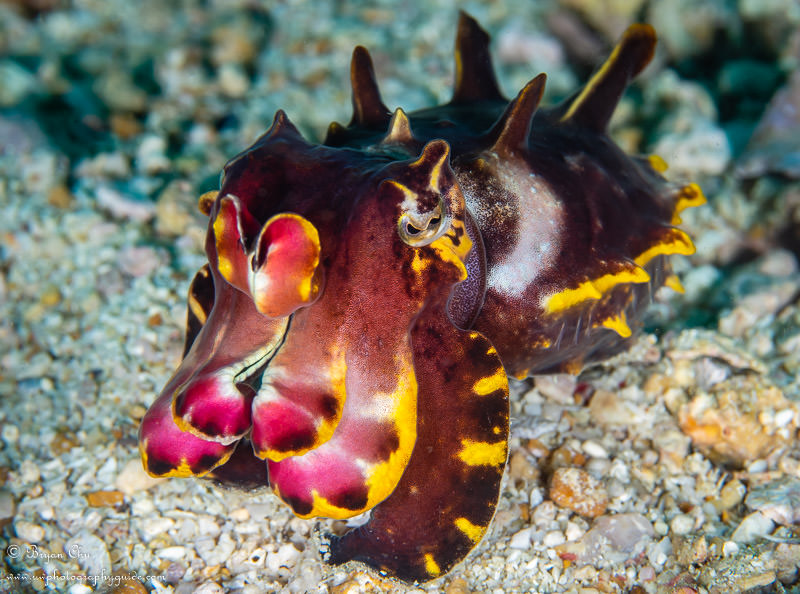
There were also some sea snakes, large fields of whip corals (with their attendant shrimp), lots of pipefish, the only frogfish of the trip, and, of course, a blue-ringed octopus.
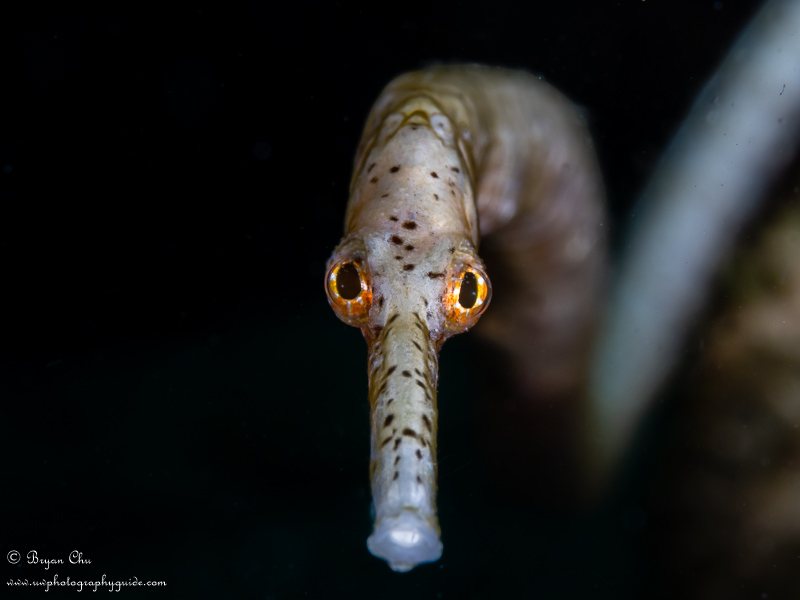
Capitancillo Island
This day trip is not run as often as Gato and Kalanggaman because it is a 90 minute boat ride each way. However, it is definitely worth the ride, and worth a special request. Capitancillo is a small island, with shallow underwater plateau areas surrounded by steep, dramatic walls on all sides.
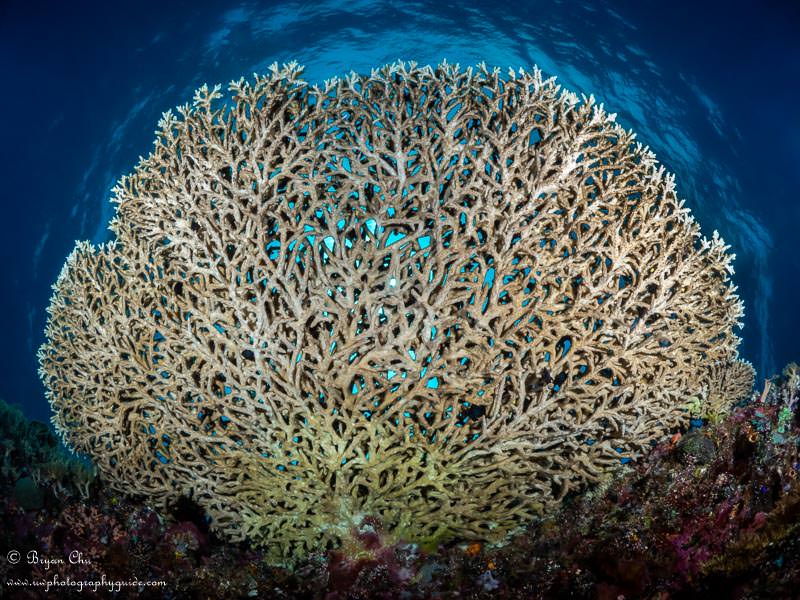
Table coral at Capitancillo. Olympus OM-D E-M1, Olympus 8mm fisheye lens, Nauticam housing, 2x YS-D1 strobes. f/16, 1/320 sec, ISO 200.
The walls are nice enough, though lacking in the typically photogenic gorgonian sea fans one might expect to see. So, wide angle photos on the walls can be a bit hard to come by, but they are still nice to dive. One of the dives our guide found some pygmy seahorses, but I didn’t bother attempting that with my fisheye lens!
The plateaus are where the really good stuff happens; beautifully clear, shallow water packed full of fantastically healthy table corals, and lots of fish. We typically spent the last 20-30 minutes of each dive just taking it in. It was just spectacular.
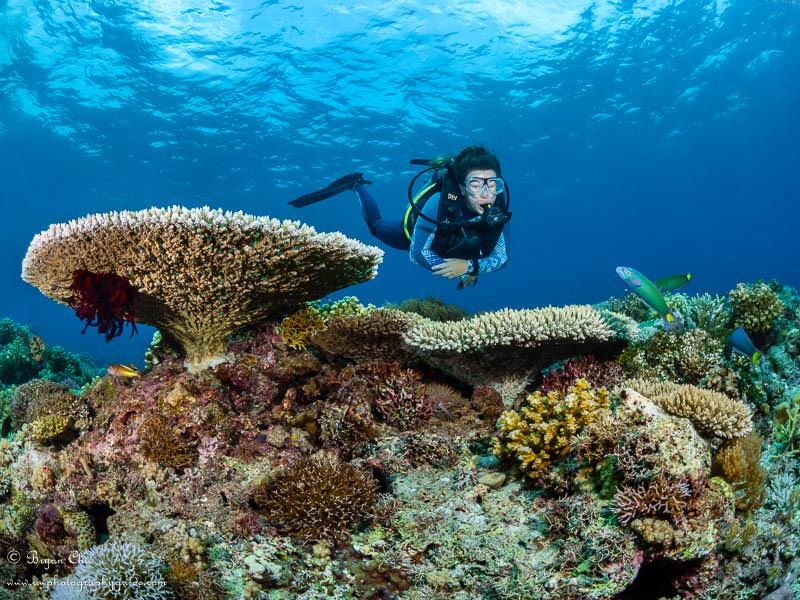
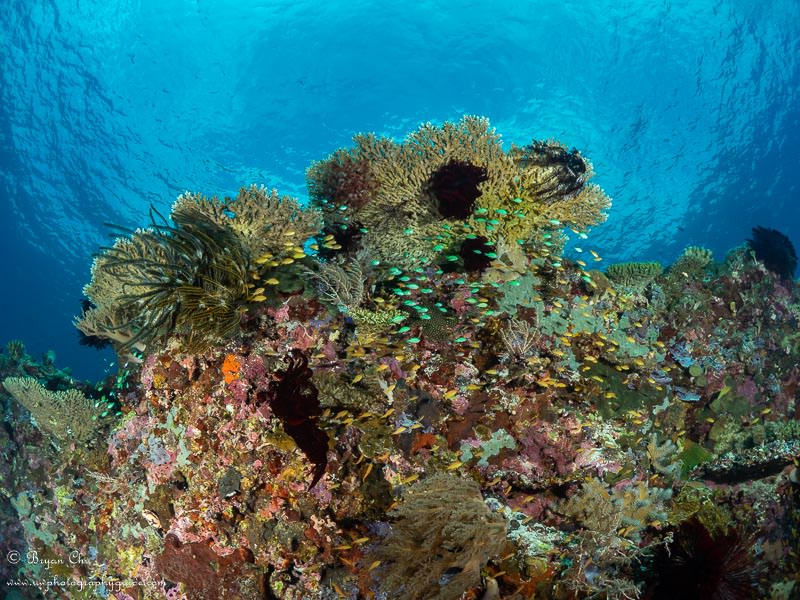
Kalanggaman Island
Kalanggaman is another day trip, though it’s more like 60 minutes by boat. This is a very popular site with a lot of boats. It has a beautiful wall, adorned with colourful soft corals and gorgonian sea fans, with plentiful schools of fish, and some nice corals at the top. We are talking first rate wide angle scenery. However, when we were there it was very busy with divers. Every time things looked like they had cleared up for a good shot, another group of divers would appear, and there were bubbles everywhere. But when there were clearings to shoot, it was definitely worth it.
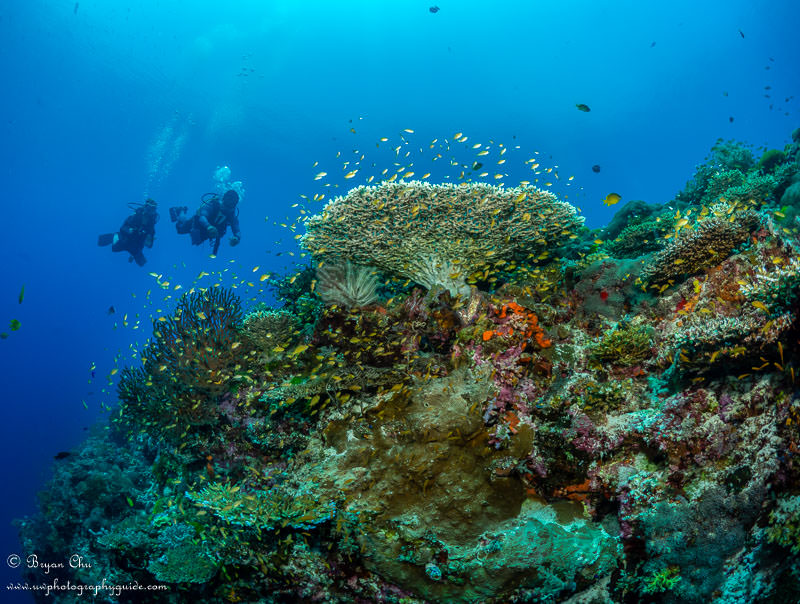
After diving and lunch, we went ashore to hang out on the beautiful white sand beaches, and then it was time for another dive, and then the boat ride back. There is a reason this place is really popular on the "Instagram loop."
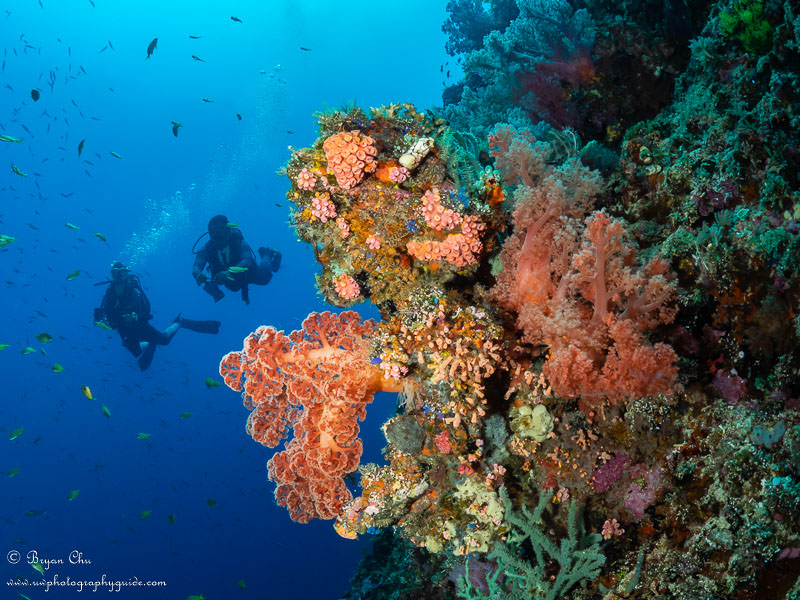
The wall at Kalanggaman. Olympus OM-D E-M1, Olympus 8mm fisheye lens, Nauticam housing, 2x YS-D1 strobes. f/7.1, 1/250sec, ISO 200.
This would have been a knockout dive site if it had been less busy. I heard from others that it isn’t usually this busy, so maybe we just had an unlucky day.
Gato Island
Gato is the other very popular day trip. For this site I took my macro setup, as it was supposed to be more of a macro site (and indeed, the wide scenery was not as good as Kalanggaman or Capitancillo). We had seahorses, a blue-ringed octopus, a large white-tip reef shark, a nice swim-through…and some sea snakes! Gato Island is a sea snake reserve and has a large sea snake population, and I was really excited to make their acquaintance.
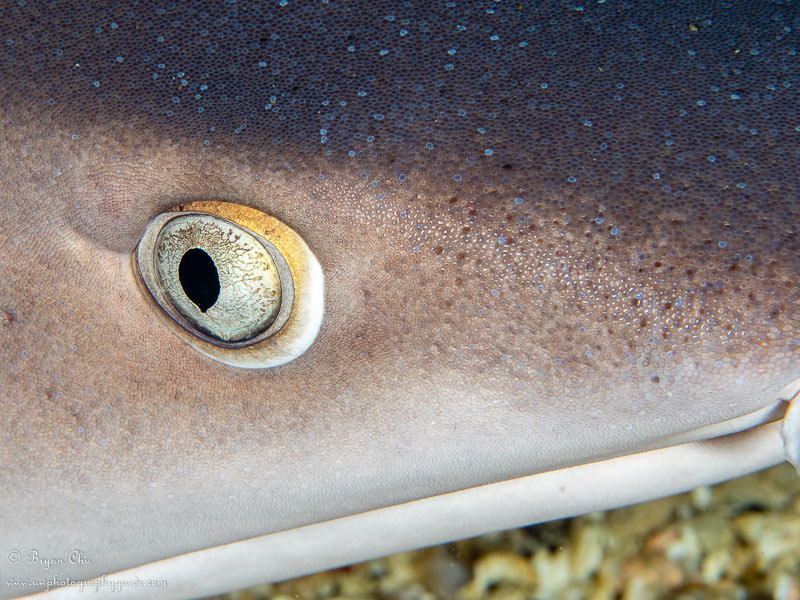
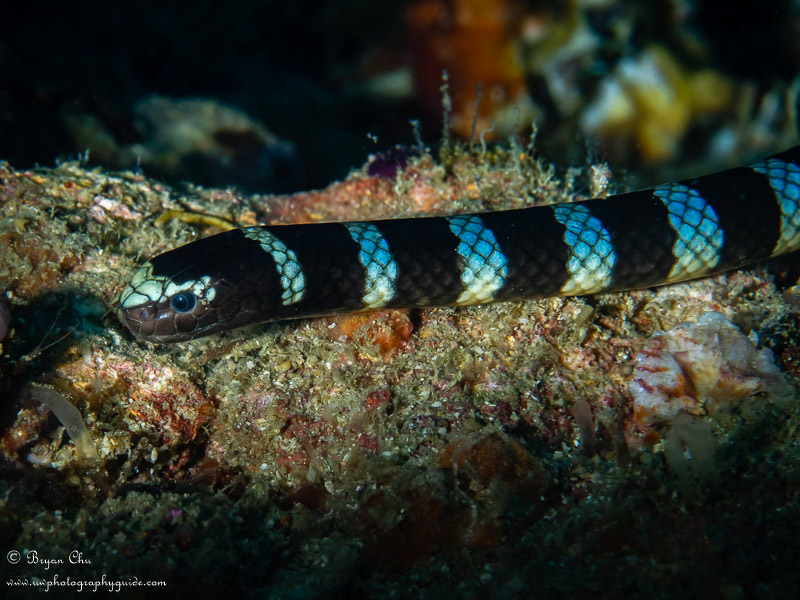
If you want to get a great sea snake shot, good luck! I did not get as good of one as I was hoping for, but it was at least a start. Next time I think I can improve. But seriously, if you want a great sea snake shot, check out this master class tutorial on planning for (and getting) great shots. It's very helpful!
Monad Shoal
I guess I should mention the thresher sharks as well. The lighting is very difficult, as no strobes or artificial lights are allowed to be used, so as not to scare off the sharks. After all, they have huge eyes and are very skittish. Additionally, we have to dive with them around sunrise, and at around 90 ft, so there is not a whole lot of ambient light making its way down there.
I was using my Olympus 8mm fisheye lens, hoping to get really close to a shark, but even after 4 dives, I just could not get nearly close enough for a decent shot. It was nice having the f/1.8, but ultimately all of my shots were from too far away to be any good.
If I had a wide angle zoom setup I would certainly have used it, as that would have been much better. Probably somewhere around 20mm full frame equivalent would have at least gotten something decent, because the sharks did come fairly close…just not fisheye close (though fisheye lenses are still awesome)!
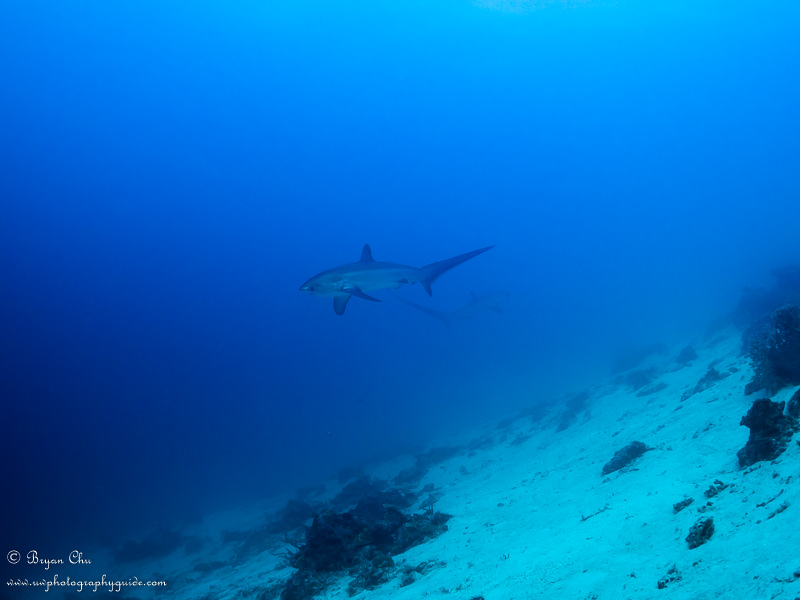
Malapascua Diving Verdict
Even though they are very difficult to photograph, the thresher sharks are really cool just to see. They do make it worth going to Malapascua on their own. And once you are there, it is also worth it to visit some of the other dive sites for some nice wide angle and some high-value macro subjects, often at much less busy sites than you’ll find at macro hotspots like Anilao.
Check out Capitancillo and Kalanggaman for wide angle, Chocolate Island and Gato for macro, and local sites for pygmy seahorses and miscellaneous macro critters. Plus you should really do at least a couple of night dives, one for blue-ringed octos and one at Lighthouse for the mandarin fish!
I saw three different pygmy seahorses, and no joke, at least 10 blue-ringed octopus over the course of my dives here. 10!!
When to Dive Malapascua
We were there right at the end of May, which is the end of the high season. Things were not too busy, which meant we typically had lots of space on the dive boat, and the dive sites were not as crowded. The weather was hot, and the seas were calm, so really we couldn’t complain. The only thing to keep in mind is we were there right around full moon, and a couple of the dives at Monad Shoal had some ripping surface currents. A few days after full moon, the currents all went away, and the dive site was very calm and easy.
Diving at Malapascua is good all year round. The rainy season is mild and runs from July to December. The water temperature ranges from 25°-27°C in December through to February and 27°-30°C the rest of the year. It was very nice and warm for us, with a 3mm wetsuit doing the trick (except for Lighthouse).
One event that may be worth planning a trip around is flamboyant cuttlefish mating season. During this time, lots of flamboyant cuttlefish congregate at Chocolate Island, which I am told is pretty cool. It happened a few weeks prior to us being there.
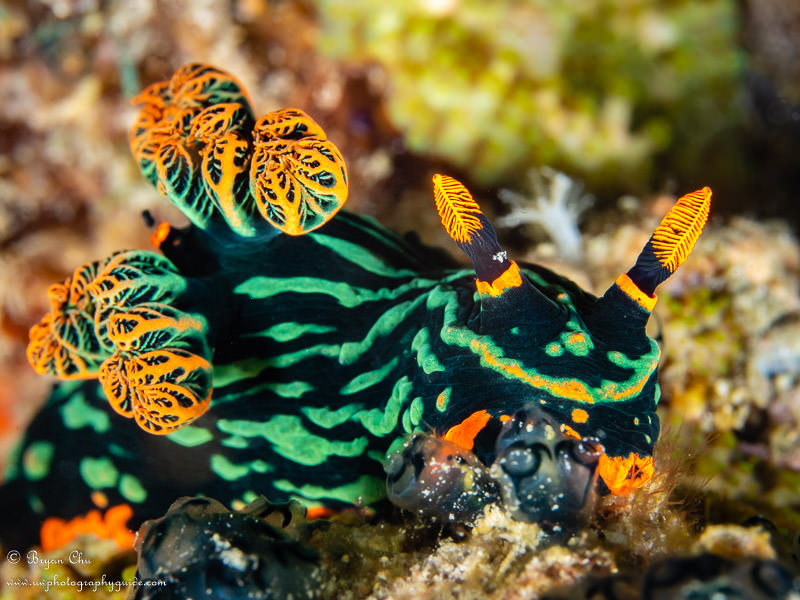
How to Dive Malapascua
To see the thresher sharks properly, you should give yourself 3 or 4 days, in case of poor weather, rough currents, or other issues. Since you have to get up before 5 am to make it out to the dive, and you get back before breakfast, this leaves the rest of the day open for other diving.
Unless you are really good at diving while sleep deprived, you’ll probably want to avoid doing a night dive back-to-back with a thresher dive. So if you give yourself 5 or 6 days in Malapascua, that will give you ample time to do a 3 mornings of sharks, a night dive, a mandarin fish dive, and all of the day dives you’ll want.
It was great staying at accommodations co-located with the dive shop. We would certainly do it this way again, as it makes it much easier for meals between dives, managing your gear and underwater photo rig, and being on time to check Nitrox prior to the 5:15 am thresher shark departures.
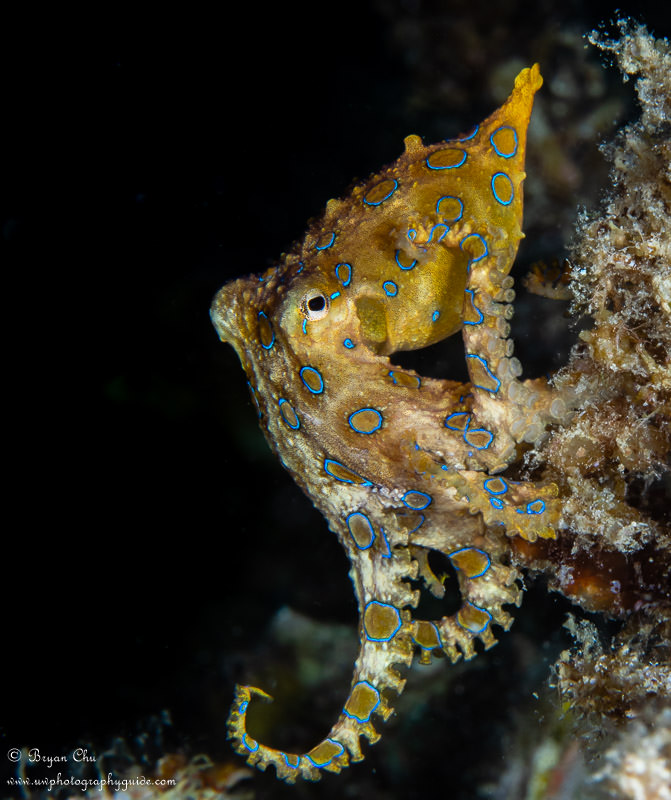
Malapascua does not have the huge macro photography crowds of the top macro dive destinations in the Philippines and other countries. This means that the macro spotting ability of the average guide on the island may not be as good as somewhere like Anilao, Dumaguete, Lembeh or Tulamben. So it is even more important to go with a dive operation that has excellent dive guides. On the dives we did, our guides from Devocean showed that they know their stuff. Whatever operation you are looking at, make sure you do some checks of reviews to make sure they know what they're talking about. Maybe ask some questions as well, about how often they go to Chocolate Island, if they know where to find pygmy seahorses and blue-ringed octopus, that kind of thing.
Another thing we really appreciated about Devocean was that they are a decently large dive operation, with two large and spacious dive boats. Being a big operation meant that they were running day trips to Gato and Kalanaggaman most days, and that they could also support dives at Chocolate Island, and the long day trip to Capitancillo. I heard about some people who looked at smaller operations who could not guarantee them many of the dives they wanted to do, as they weren’t sure they would have enough customers. Additionally, the large dive boats meant we had tons of space for gearing up, making it much more enjoyable than the typical crowded dive boat experience.
Hippocampus had a great restaurant with seating right along the beach, and nice vegetarian options. The resort was well-run and very convenient, only steps from the dive operation. Lisa and I made a video showing a typical day in the life with these two operations, using Lisa’s GoPro Hero7 Black.
If you have the budget, you can also dive Malapascua as part of a larger liveaboard itinerary, like a Best of the Visayas liveaboard trip.
Book Your Trip to Malapascua

Our sister company Bluewater Dive Travel has lots of experience booking dive trips to Malapascua. So if you want help planning your trip, drop them a line at info@bluewaterdivetravel.com!
Thanks for reading and I hope you found this useful! As always, if you have any questions about the destination, gear or techniques, feel free to drop me a line at bryan AT uwphotographyguide DOT com.
RECOMMENDED ARTICLES
SUPPORT THE UNDERWATER PHOTOGRAPHY GUIDE:
The Best Service & Prices on u/w Photo Gear
 Visit Bluewater Photo & Video for all your underwater photography and video gear. Click, or call the team at (310) 633-5052 for expert advice!
Visit Bluewater Photo & Video for all your underwater photography and video gear. Click, or call the team at (310) 633-5052 for expert advice!
The Best Pricing, Service & Expert Advice to Book your Dive Trips
 Bluewater Travel is your full-service scuba travel agency. Let our expert advisers plan and book your next dive vacation. Run by divers, for divers.
Bluewater Travel is your full-service scuba travel agency. Let our expert advisers plan and book your next dive vacation. Run by divers, for divers.



































